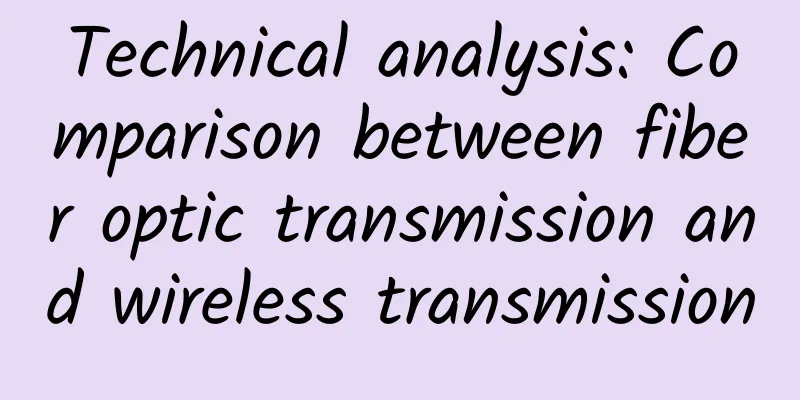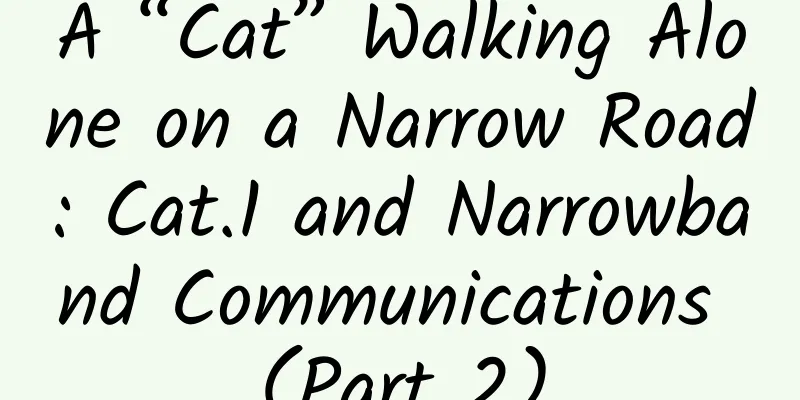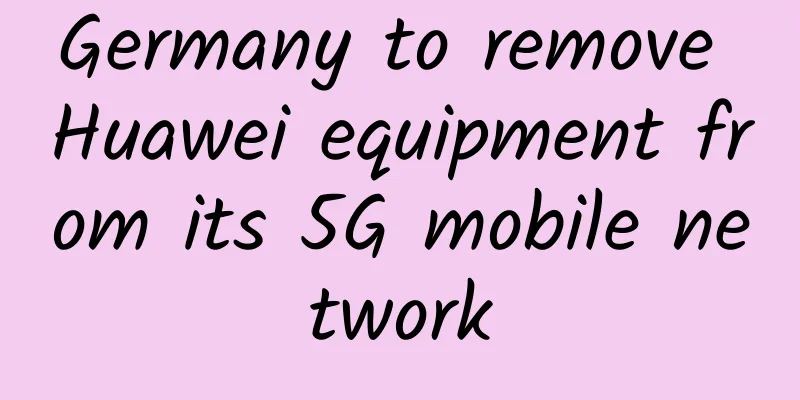Technical analysis: Comparison between fiber optic transmission and wireless transmission

|
According to the traditional communication system model, its basic framework is: source-transmitter-transmission system-receiver-destination. The transmission system (channel) is the system model composed of what we call the transmission media. Since the transmission of signals in the channel is unidirectional and will be affected and interfered by noise, the appropriate selection of transmission media is extremely important for improving the performance of signal transmission, that is, reliability and effectiveness. The quality of communication depends on the characteristics of the signal and the nature of the transmission media. The key is whether the signal spectrum characteristics and channel transmission characteristics can be matched well. In a narrow sense, the transmission media refers to the transmission system between the transmitter and the receiver, which is aimed at the signal; in a broad sense, it refers to the system between the source and the destination, which is aimed at the information. We divide the transmission media into guided and non-guided types. The difference between the two is that they are subject to the characteristics of the media itself and the signal itself. Guided and non-guided are what we often call wired communication and wireless communication. Wired communication is divided into four categories: twisted pair, coaxial cable, overhead open wire and optical fiber. Optical fiber, also known as optical fiber, is an extremely thin (50μm~100μm) and soft medium that can transmit light signals. The cross-section of the optical fiber is circular, and it consists of three parts from the outside to the inside: the outer shell, the cladding, and the core. The optical properties of the three are different: the core is often composed of silica, which is a light path; the cladding is composed of multiple layers of reflective glass fiber, the purpose of which is to reflect light to the core. According to the transmission point mode, optical fiber can be divided into two transmission modes: single-mode and multi-mode. Single-mode provides a single light path; multi-mode optical fiber, that is, it diverges into multiple light waves, each light wave takes a path. Single-mode optical fiber has a larger capacity because of its low attenuation, but its production is more expensive than multi-mode optical fiber. Optical fiber can only transmit in one direction at any time. Therefore, to implement two-way communication, it must appear in pairs, one for input and one for output, and both ends of the optical fiber are connected to the optical interface.
Optical fiber has four significant advantages: 1. Large bandwidth and large capacity. Now, optical fiber has basically achieved engineering practicality, which can not only meet the transmission needs of comprehensive business information such as telephone, data, text, and images, but also adapt to the development of the future information society. Compared with other wired transmission methods, optical fiber is currently the transmission medium with the best performance. Through frequency division, time division and wavelength division multiplexing, it will be more and more used in daily life. 2. Low loss and long relay distance. The transmission loss of optical fiber will not change with the change of frequency and temperature, so the installation of optical fiber does not need strict stability; and its long relay distance performance can make it applicable to submarine optical cable communication and national defense long-distance communication, which is of great significance to solving submarine communication. 3. Good anti-interference performance. Optical fiber is an insulating material that can only guide light but not conduct electricity, so optical fiber is not subject to electromagnetic interference. Therefore, it can prevent eavesdropping due to electromagnetic wave radiation and prevent the influence of external interference signals, which plays an extremely important role in improving the security and confidentiality of modern communications. 4. Small size and light weight. Since optical fiber can be multiplexed and has a large capacity, only extremely small and thin optical fibers are needed to transmit a large amount of signals, which reduces transportation and construction costs. The opposite of wired communication is wireless communication, which includes radio wave communication, infrared communication and microwave communication. Since they all propagate in a straight line and require a line of sight path in both sending and receiving, they are also called line of sight media. Radio waves are omnidirectional and have a low frequency; infrared rays have the lowest frequency and are often used to detect temperature-related objects; microwaves have a frequency between the two and are directional, mainly using the characteristic that they can penetrate the ionosphere and enter the universe. Microwaves are now the most widely used and are mainly divided into two types, namely ground microwave relay communication and satellite communication. Since microwaves propagate in a straight line in space and the surface of the earth is a curved surface, their propagation distance on the ground is limited. In order to increase the transmission distance, the height of the antenna tower is increased. The higher the tower, the longer the transmission distance. Ground microwave communication has the following main characteristics: high frequency, large bandwidth, long transmission distance, strong anti-interference ability and high reliability. However, due to its high frequency characteristics, there must be no obstacles between adjacent sites, and it is easily affected by weather and causes distortion. The principle of satellite communication is similar to that of terrestrial microwave communication. Its essence is a kind of microwave relay communication using an artificial synchronous earth satellite located at an altitude of 36,000 km as a relay. With three properly configured satellites, all places in the world except the two-level sound zone can be covered. The biggest advantage of satellite communication is that the communication is surface-covering. The electromagnetic waves emitted by synchronous satellites can radiate to one-third of the earth's area, which is convenient for realizing multiple access and mobile communications, and also for forming a communication network. Therefore, it is widely used in the transmission of multi-channel long-distance telephone, telegraph, television and other services. We can also enjoy live broadcasts in other regions in different regions. However, it also has its disadvantages, that is, its delay is too large. No matter how far the distance between the two stations on the ground is, the delay from the transmitter to the receiver through the satellite is 270us, which is much longer than other wireless communications. Because of this, the confidentiality of satellite communication is also poor. By comparing the representative of wired communication, optical fiber, and the representative of wireless communication, microwave, we can see that each has its own advantages and disadvantages. Optical fiber is subject to the characteristics of the medium itself. It requires the matching of signals and channels, which is the concept of road; while wireless communication relies on the characteristics of the signal itself, which is a concept of field. This is the most basic difference in their appearance. With the rapid development of the economy, the research on transmission media has become more and more profound. Optical fiber can transmit signals at high speed and accurately, and it is light in weight, easy to build, and low in cost. However, it is precisely because of these advantages that it also has a great disadvantage, that is, it may not meet the construction requirements. For example, when the communication line has to pass through certain buildings, mountains, construction excavation, cable laying and other projects, it can only detour, which is time-consuming and laborious. Therefore, optical fiber needs free space to display its talents. Wireless communication conceals this disadvantage. It can transmit freely through different obstacles by selecting different waves as carriers. However, satellite communication also has great disadvantages. It does not rely on real media to transmit signals, so errors may occur. For example, in microwave communications, sometimes the signal emitted by an antenna will be divided into several slightly different paths to reach the antenna, thus causing distortion; during the transmission process, it will also be more affected by environmental factors such as weather than wired transmission. So, how to choose the signal transmission method? For example: when we want to build an office building, we have to choose the network coverage method, whether to choose to lay high-speed, lightweight optical fiber, or choose wireless network coverage: if we are a fixed office, then we will of course choose optical fiber, because it has a very high transmission rate and is stable; if we need to work on the move, then choose wireless communication, so that we can access the Internet anytime and anywhere without being restricted by location, but in this case the network is not very stable. If we choose to communicate between the seabed and the land, we generally choose optical fiber, although this will require a lot of materials to lay, the signal will have a great time delay, and require a lot of manpower and material resources, but if we choose wireless communication, due to the great resistance of seawater, the signal will be greatly attenuated, resulting in a very short transmission distance... Pinheng Communication Technology Experts suggest that we should choose according to needs and adapt to local conditions. According to the current level of research on transmission media, optical fiber has great application prospects in both civilian and military applications. |
<<: Half of the world's websites use HTTPS: HTTP is being phased out
>>: AT&T to use open source SDN technology to prove 5G
Recommend
OneTechCloud: 25.2 yuan/month KVM-1GB/20G SSD/5M unlimited traffic/Hong Kong CN2
OneTechCloud is a Chinese hosting company establi...
Exploration and practice of multi-link transmission technology in Volcano Engine RTC
Traditional data transmission methods mostly use ...
UFOVPS has 10% off for monthly payment and 20% off for annual payment, top up 500 and get 30 free, CN2 GIA lines in the US/Japan/Hong Kong are available
UFOVPS's latest promotion will only last for ...
80VPS: Hong Kong server free upgrade 100M bandwidth from 450 yuan/month, US CN2 server from 350 yuan/month
80VPS, a long-established Chinese hosting company...
Top 10 technology trends governments should watch in 2021
[[391593]] The pandemic has forced government age...
The intelligent world is waiting for you to build. Huawei Cloud joins hands with millions of developers to Login 2020
What does an intelligent world where everything i...
RAKsmart cloud server 30% off + first month half price, popular cloud server 10% off annual payment from 79 yuan, Hong Kong/Japan/US data center
In addition to VPS and dedicated servers, RAKsmar...
LiCloud: $29.99/month Hong Kong dedicated server - E3-1230v2, 8G memory, 240G SSD or 1TB HDD hard disk, 15M bandwidth
LiCloud.io is a hosting company (LiCloud Limited)...
5G latency is less than 1 millisecond and will it replace Wi-Fi? Not true!
As the fifth generation of mobile communication n...
Dell'Oro: 6 GHz - the next 5G frontier?
Today, 5G is being deployed at full speed in the ...
4G packages can also connect to 5G networks: but the speed is only slightly faster
5G has been popular in China for some time. The f...
Just remember one number and you can quickly calculate the available range of the IP segment.
As long as you remember a simple number, you can ...
This article explains OSPF clearly.
[[426836]] OSPF OSPF is an IGP and a Link-State p...
Dish Network plans to acquire Republic Wireless
According to foreign media, Dish Network announce...
5G networks need to overcome three major barriers to large-scale commercial use
Although 5G licenses have been issued, the commer...









